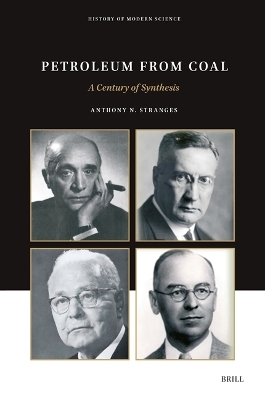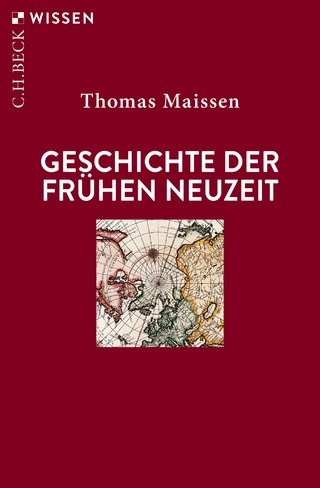
Petroleum from Coal
Brill (Verlag)
978-90-04-54411-6 (ISBN)
Petroleum from Coal shows why and how Friedrich Bergius and Franz Fischer and Hans Tropsch in 1913-26 invented and developed synthetic fuel processes; explains why and how Matthias Pier at BASF- IG Farben and Otto Roelen at Ruhrchemie successfully industrialized the syntheses during the Nazi-World War II years; and analyzes the pre- and post-World War II vicissitudes of the synthetic fuel industry. The research of Germany’s scientists in the 1920s-40s made them world leaders in synthetic fuel studies. Information on the synthetic fuel processes has come from the Allied teams who went to Germany and Japan during World War II’s closing months and from British, American, and Canadian synthetic fuel investigations.
Anthony N. Stranges is Professor in the History Department at Texas A&M University. He teaches history of science, especially chemistry and chemical engineering. He has published several books and articles in various journals, including Isis, Technology and Culture, and Annals of Science.
Contents
Preface
Permission Acknowledgements
List of Illustrations and Tables
Abbreviations
1 Overview of the Synthetic Fuel Industry
1 Introductory
2 Global Energy Situation 1910–90s: Energy Crises and Revivals
3 Impact of Hydraulic Fracturing (Fracking) Revolution on Natural Petroleum and Synthetic Fuel Production
4 Scientific and Engineering Advances in Synthetich Fuel Research and Development
5 Economics and Politics of Synthetic Fuel Development
6 Chapter Titles and Summaries
7 A Note on Sources
2 Friedrich Bergius, Franz Fischer and Hans Tropsch: The Rise of the German Synthetic Fuel Industry
1 Introductory
2 Hydrogenation Begins
3 First Industrial Application of High-Pressure Hydrogenation
4 Friedrich Bergius: Background to High-Pressure Coal Hydrogenation
5 IG Farben Process and Its Industrialization in Germany
6 Fischer-Tropsch Synthesis
7 Conclusion
3 Germany’s Synthetic Fuel Industry 1927–45
1 Introductory
2 Germany’s Energy Plan
3 BASF-IG Farben’s Coal Hydrogenation Program
4 Industrial Development of the F-T Synthesis
5 Summary of Synthetic Fuel Industrial Development in Germany 1927–45
6 Labor Force in the Synthetic Fuel Plants
7 Conclusion
4 From Birmingham to Billingham: High-Pressure Coal Hydrogenation in Great Britain
1 Introductory
2 Fischer-Tropsch Synthesis and the Beginning of Coal Hydrogenation in Britain: Birmingham
3 Coal Hydrogenation at the Fuel Research Station
4 Influence of Variables on the Conversion Process
5 Development of a Small-Size Continuous Plant
6 ICI and the Billingham Plant
7 Politics and Economics
8 Conclusion
5 Synthetic Fuel Production in Prewar and World War II Japan: A Study in Technological Failure
1 Introductory
2 Overview of Japan’s Coal Conversion Processes, Seven Year Energy Plan
3 Development of Japan’s Oil Shale, Derived and Synthetic Liquid Fuel Sources to 1930
4 Government Support of Japan’s Synthetic Fuel Industry
5 Oil Shale and LTC Emerge as Major Sources of Liquid Fuel
6 Research and Development of the Fischer-Tropsch Synthesis: A Promising Beginning
7 Coal Hydrogenation: High Hopes but Little Success
8 Japan’s IG Farben Connection
9 Conclusion
6 Canada’s Mines Branch and Its Synthetic Fuel Program for Energy Independence
1 Introductory
2 Early Concern for Fuel Supply
3 Synthetic Fuel Research at the Mines Branch
4 Wartime Developments on Synthetic Fuel
5 Postwar Developments on Oil Sands Separation
6 The Blair Report, Athabasca Conference, and the State of Canadian Fuel Research
7 Canada’s Changing Energy Situation
8 Conclusion
7 The United States Bureau of Mines’ Synthetic Fuel Program 1920s–50s: German Connections and American Advances
1 Introductory
2 Early Bureau of Mines, European, and Japanese Research and Development of Derived and Synthetic Liquid Fuel
3 Liquid Fuel Developments in the United States
4 Development of the F-T Synthesis
5 Early Research on Coal Hydrogenation
6 Coal Hydrogenation and F-T Synthesis at the Bureau of Mines, the Synthetic Liquid Fuels Act of 1944
7 The Demonstration Synthetic Fuel Plants in Louisiana, Missouri
8 Industrial Development of F-T and Coal Hydrogenation
9 Concluding the Bureau’s Synthetic Fuel Program
8 Epilogue: Post-World War II Synthetic Fuel Development and the Emergence of Environmental Concerns
1 Introductory
2 Pre-World War II Small-Scale Synthetic Fuel Developments: Italy and France 1920s–40s
3 Post-World War II Synthetic Fuel Developments: Sasol 1950s–2000s
4 Post-World War II Synthetic Fuel Developments: United States 1960s–80s
5 Fossil Fuel, Synthetic Fuel, the Environment
6 Oil Crises 1990s, Oil Shale Fracking Revolution and Its Consequences
7 Conclusion
Bibliography
Index
| Erscheinungsdatum | 23.04.2024 |
|---|---|
| Reihe/Serie | History of Modern Science ; 5 |
| Verlagsort | Leiden |
| Sprache | englisch |
| Maße | 155 x 235 mm |
| Gewicht | 841 g |
| Themenwelt | Geschichte ► Allgemeine Geschichte ► Neuzeit (bis 1918) |
| Geschichte ► Teilgebiete der Geschichte ► Wirtschaftsgeschichte | |
| Naturwissenschaften | |
| ISBN-10 | 90-04-54411-9 / 9004544119 |
| ISBN-13 | 978-90-04-54411-6 / 9789004544116 |
| Zustand | Neuware |
| Haben Sie eine Frage zum Produkt? |
aus dem Bereich


